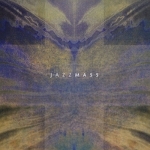Home » Jazz Articles » Extended Analysis » Ike Sturm: Ike Sturm: JazzMass
Ike Sturm: Ike Sturm: JazzMass
 Ike Sturm
Ike SturmJazzMass
Self Produced
2009
Ask any jazz fans if he or she knows "When The Saints Go Marching In" or John Coltrane anthem "A Love Supreme" and you will most probably get an affirmative nod. Those versed in the music's history might even know Duke Ellington "Come Sunday" or his Grammy Award-winning piece "In The Beginning, God." Yet the idea of jazz as a sacred art form has not found a place in most people's minds, despite the music's debt to the gospel tradition and the considerable repertory of compositions, old and new, expressing belief in the divine.
Turning to the black churches of the south of the US circa 1900 is to find the roots of jazz. Be it in the servants' psalmodies, the congregations' responsorial chanting, or simply in the singing of hymns and spirituals to ease the hardships of every day life, black music has since nourished the music of countless musicians, from trumpeter Louis Armstrong to saxophonist Coltrane by way of singers Mahalia Jackson and Ray Charles. Of course, the music has changed and evolved since Armstrong's celebrated performance of "The Saints." But jazz as a expression of faith has survived—and, with JazzMass, through bassist-composer Ike Sturm.
Though he has been busy leading his own ensemble, Sturm's principal occupation is as Assistant Director of Music for the Jazz Ministry at Saint Peter's Church in New York City, a position surprisingly similar to the ones classical composer Bach held throughout his career. These responsibilities include writing new music, assembling and rehearsing the choir, and helping with the organization of the music worships. That being said, although JazzMass draws from the same sense of piety and devotion such celebrations invoke, it nevertheless ventures far from the usual forms of devotional music, which, in the end, may not be such a bad thing at all.
For both its massive instrumental apparatus (choir, strings orchestra and jazz combo) and slightly altered formal organization, Sturm's "Mass" hardly qualifies as a liturgical work, at least not one apparently destined to accompany a typical Roman Catholic Mass. For example, besides the aforementioned orchestra, the credo was abandoned. Instead instrumental interludes, songs and full-blown solo sections have been woven into the remaining sections of the Mass as transitional material, making the end result sound more like an extended suite than a musical liturgy.
"Our Father," for example, takes the allure of a conventicle as saxophonist Donny McCaslin, drummer Ted Poor and pianist Adam Benjamin conjure a heavenly improvisation, only to be halted by the angelic voices of the choir. The Kyrie, performed in a laid-back, almost sexy groove, could also very well stand by itself apart from the suite, its compositional architecture being so evocative. The recording ends on a joyful note with the corralling of "Hymn: Shine," a diatonic, carol-like waltz, with some spirited soloing by McCaslin.
Sturm offers a weighty yet luminous work that is profound and appealing, in terms of its spirituality, amalgam of human voices, richly textured harmonies and superior improvisers.
Tracks: Kyrie; Gloria; Interlude; Hymn: Just As I Am; Offertory: Stillness; Sanctus; Thanksgiving; Our Father; Agnus Dei; Hymn: Shine.
Personnel: Misty Ann Sturm: vocals; Loren Stillmean: alto saxophone; Donny McCaslin: tenor saxophone; Ingrid Jensen: trumpet, flugelhorn; Adam Benjamin: piano, Rhodes; Ryan Ferreira: guitar; Ted Poor: drums; Tim Allbright: trombone (5); Sara Caswell: violin (5); Madeline Sturm: clarinet (5); Ike Sturm: bass; choir; string orchestra.
Personnel
Ike Sturm
bassAlbum information
Title: Ike Sturm: JazzMass | Year Released: 2009 | Record Label: Unknown label
< Previous
Watch What Happens
Next >
Take Five With Glenn Nolle
Comments
Tags
For the Love of Jazz
 All About Jazz has been a pillar of jazz since 1995, championing it as an art form and, more importantly, supporting the musicians who create it. Our enduring commitment has made "AAJ" one of the most culturally important websites of its kind, read by hundreds of thousands of fans, musicians and industry figures every month.
All About Jazz has been a pillar of jazz since 1995, championing it as an art form and, more importantly, supporting the musicians who create it. Our enduring commitment has made "AAJ" one of the most culturally important websites of its kind, read by hundreds of thousands of fans, musicians and industry figures every month.


















